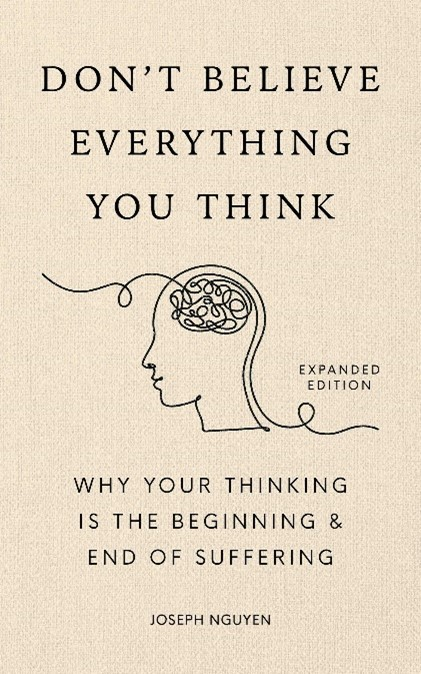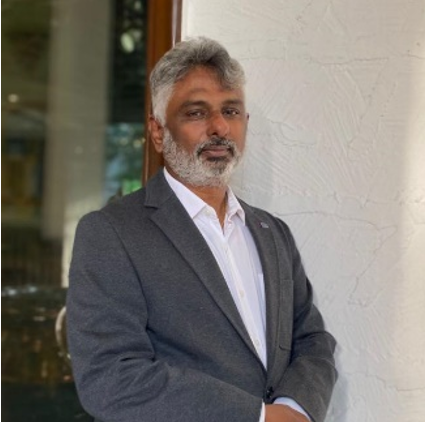Book Review 2025.08: Don’t Believe Everything You Think (2022), Paperback 167 pages, May 15, 2025

Attracted by the intriguing title, I picked up this book at Bangaluru Airport last week and completed it in five sittings. Written in a simple language, the author presents his crisp core message that is repeated multiple times with an incremental level of detail added with each repetition. These repetitions are targeted at getting the reader to imbibe the simple message which could take considerable effort to practice and make it a part of their daily routine.
Differentiation of thinking from thought is the core concept in this book. Thinking is defined an active task that emerged during the evolution to ensure the safety and survival of the individual in difficult environments. In contrast, thought is defined as that which emerges without effort in the tranquil mind and forms the basis for elevating and inspirational ideas leading to fulfilment. Further, the author asserts that both thinking and thought cannot coexist in the same mind at the same time as they are conflicting in almost all dimensions.
Suffering is seen as a product of thinking and forms the first part of the message. While pain is unavoidable, the author sees suffering as avoidable and optional for the individual arising from thinking. Hence, an individual who stops thinking will also eliminate suffering from their life. This idea is illustrated by examples of babies who are full of bliss and joy as they do not think. Likewise, athletes and artists who excel in a state of flow, in the absence of active thinking, to produce their best performance is another illustration of thought at play. Once an individual eliminates thinking, their mind becomes tranquil and this quite mind is the source of thought, which is effortless and will lead to peace, love, joy and fulfilment.
The second part of the message is the relationship between Universal Mind, Consciousness and Thought. The author comparing the mind with water, highlights the default state of both the mind and water as clear and pure. It is only when thinking muddies the mind, like water, the mind too gets muddy or muddled. To gain clarity again, stillness or non-thinking is the only way. Further the individual with the clear mind is connected to the Universal mind that can become expansive and inspirational by letting the intuition provide answers to how, thereby creating “miracles”. The only requirement is for the individual to decide on what they want or the goal they want to achieve and leave the how and when to the Universal Mind.
The author by distinguishing between goals that are means like earning money, which is a conduit for realizing other goals, and contrasting it with the “end” goals like good health which is pursued for itself provides an interesting framework to analyze the challenges we face today. Though mentioned only in a few sentences in the book, this insight for me answers a key question that is confronting many geographies in the world today of declining population or the reluctance of young couples to have children.
The “means goal” places the individual at the center and is characterized by elements of “having to do”, analytics in nature, and constrained by the environment as it is viewed through the lens of scarcity. In contrast the end goals are characterized by “wanting to do”, aspirational in nature and expansive, seen with an abundance mindset. Viewing children as a means goal puts the onus of child rearing on the parents making it a daunting task especially for the nuclear families today where both the parents pursue their careers. However, children seen as an end goal for providing unconditional love, becomes uplifting and enriching the life of parents who see the child as a blessing in the joint care of the Divine and the parents.
The last part of the book provides the reader with techniques and a step-by-step guide to eliminate thinking and thereby suffering, and replace it with a calm and tranquil mind that can become the source of inspirational and fulfilling ideas, leading to peace, love, joy and ecstasy.
There is a strong element of spirituality underlying the theme discussed in this book. The idea of suffering being optional and inflicted by thinking is rational. However, a still mind being the source of inspirational solutions for leading a fulfilling life requires deeper contemplation to gain conviction. To the spiritually inclined reader, this idea provides the explanation of how the child prodigies and geniuses’ function, for there is no other explanation for their humongous effortless output that is visible to the world.
I found this book quite insightful and providing me with a couple of ideas for practice. Recommend this book to those who are spiritually inclined and less “rational” in their outlook for exploring the ideas set out here.
Happy reading as we seek to reduce the suffering and lead a more fulfilling life.
